A major tech company tasked CallisonRTKL with exploring the future of the department store. The basic premise was to use personalization and smart logistics to create a one-of-a-kind “walk in, try on” experience.
Outputs from workshops were combined with an architectural team’s exploration into the physical limitations of the proposed site and retail goals of the client (i.e. a minimum amount of SKUs were required to be on the floor).
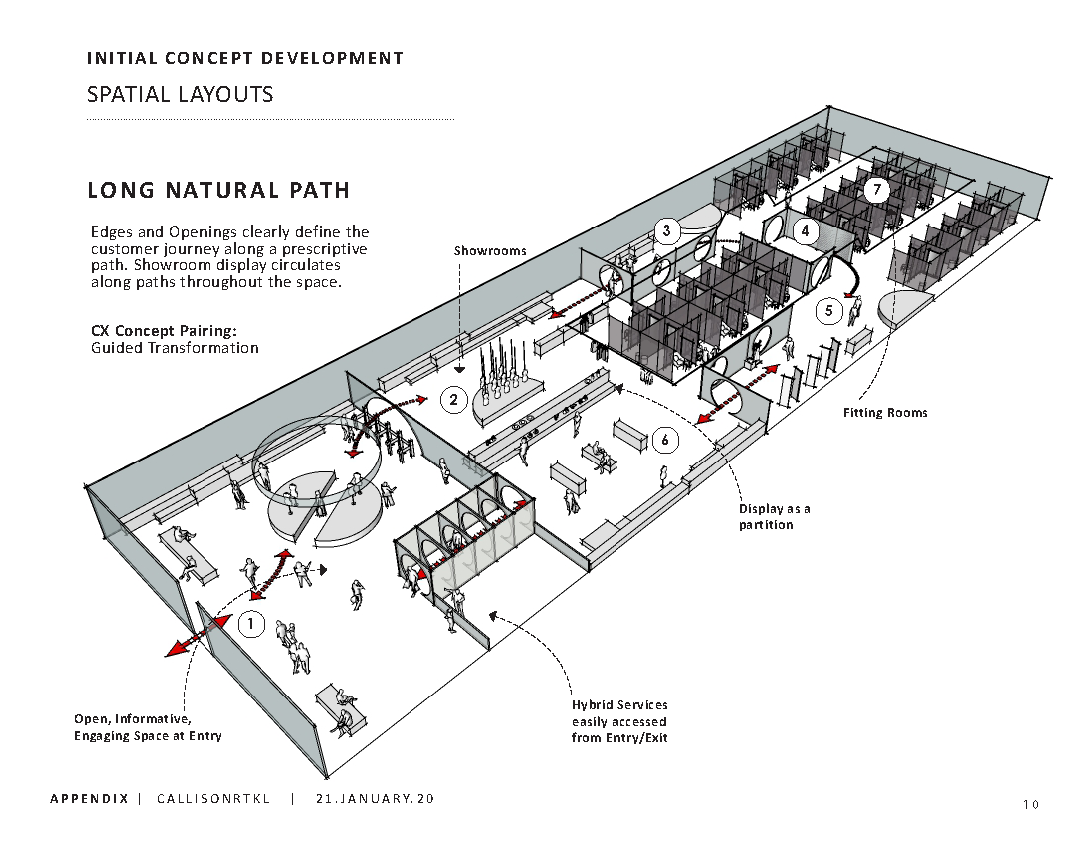
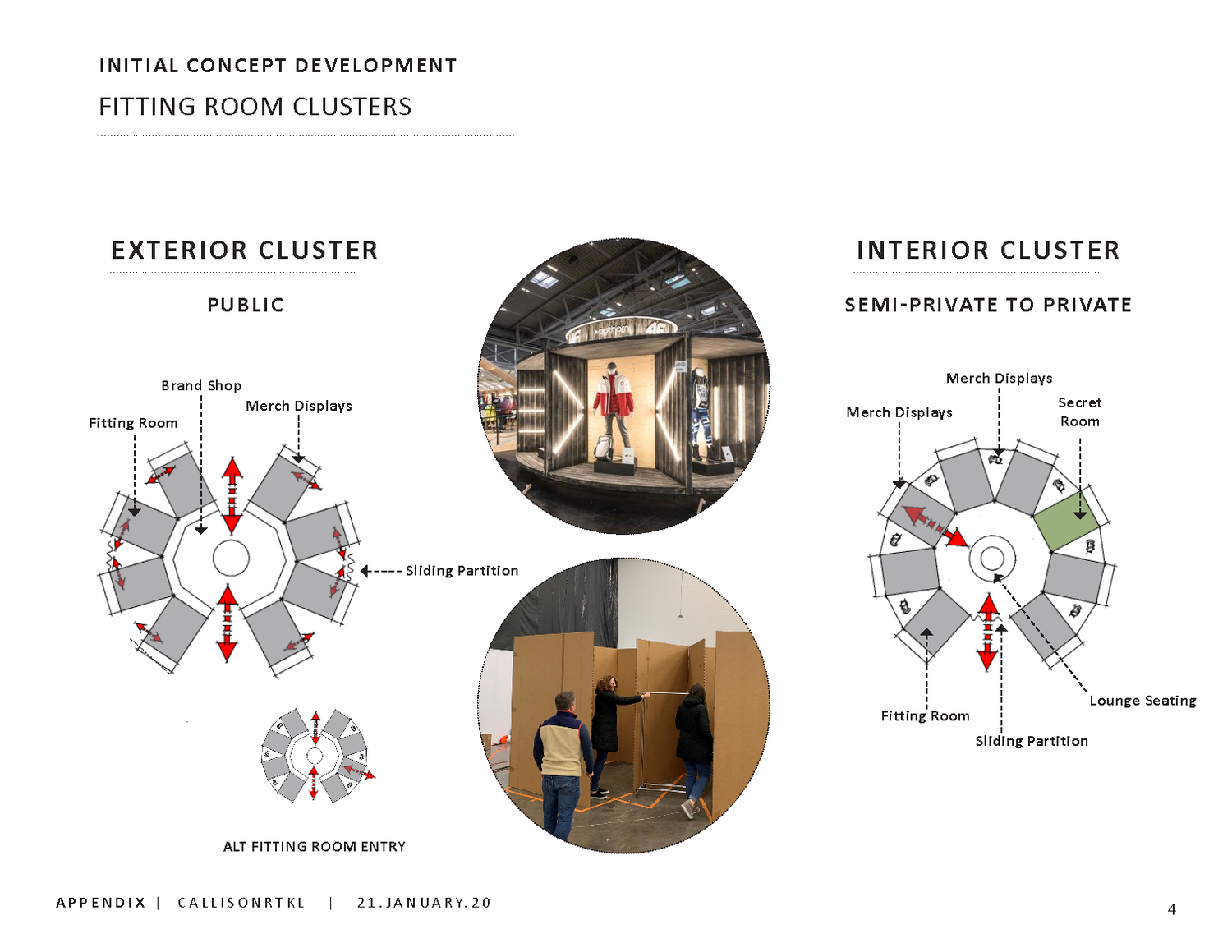
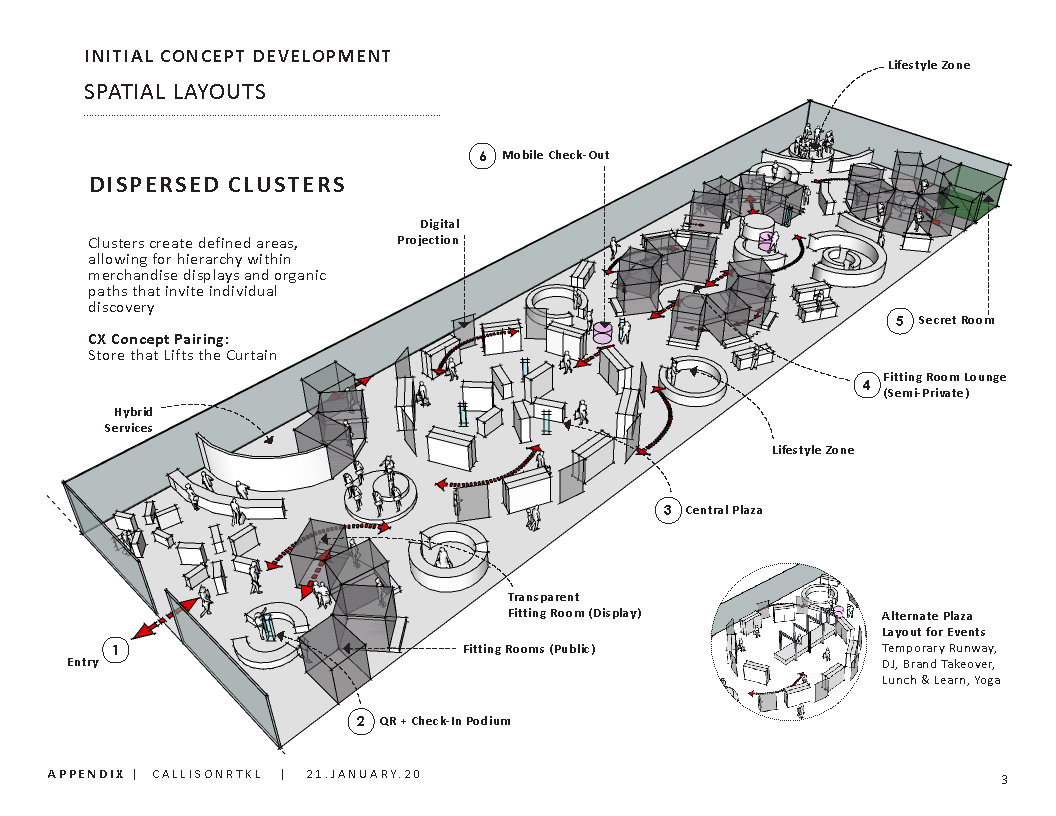
Below are a few of the whiteboards I put together - along with notes from workshops I facilitated between the digital, architectural, and branding teams of both our company and the clients.
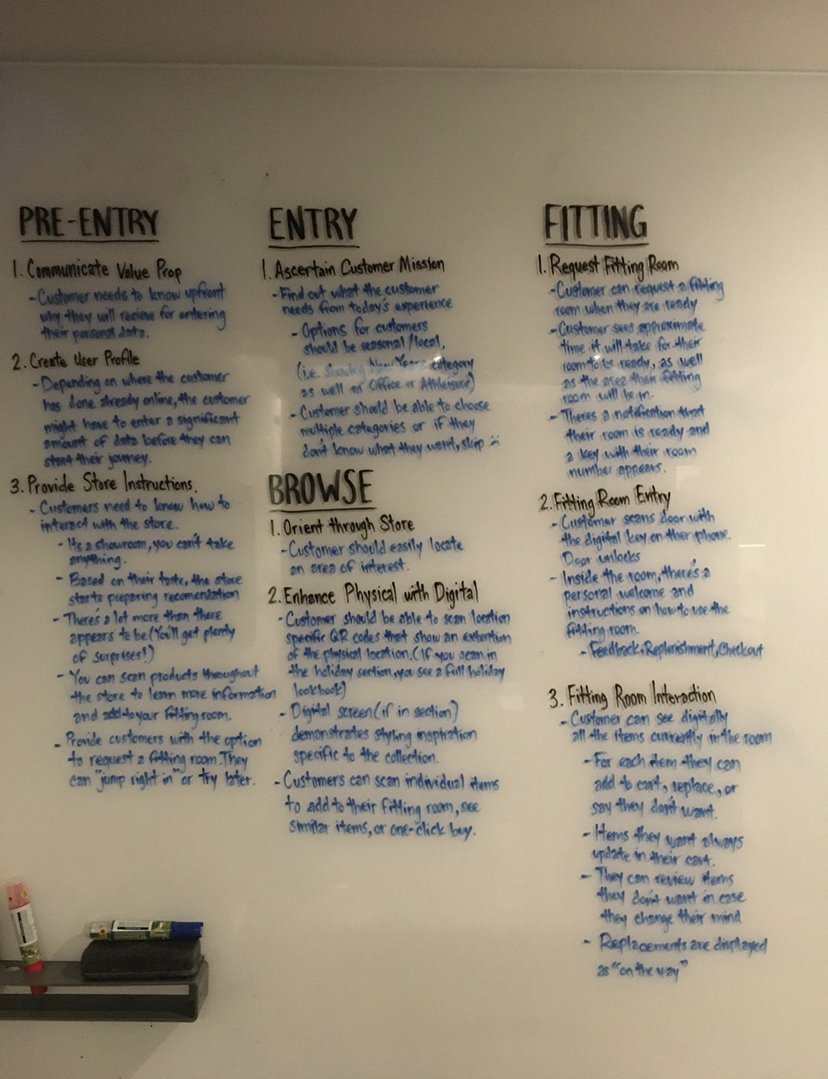


We rented an entire warehouse to build different sections of the department store to scale - before running experiential testing and interviews with fake shoppers.

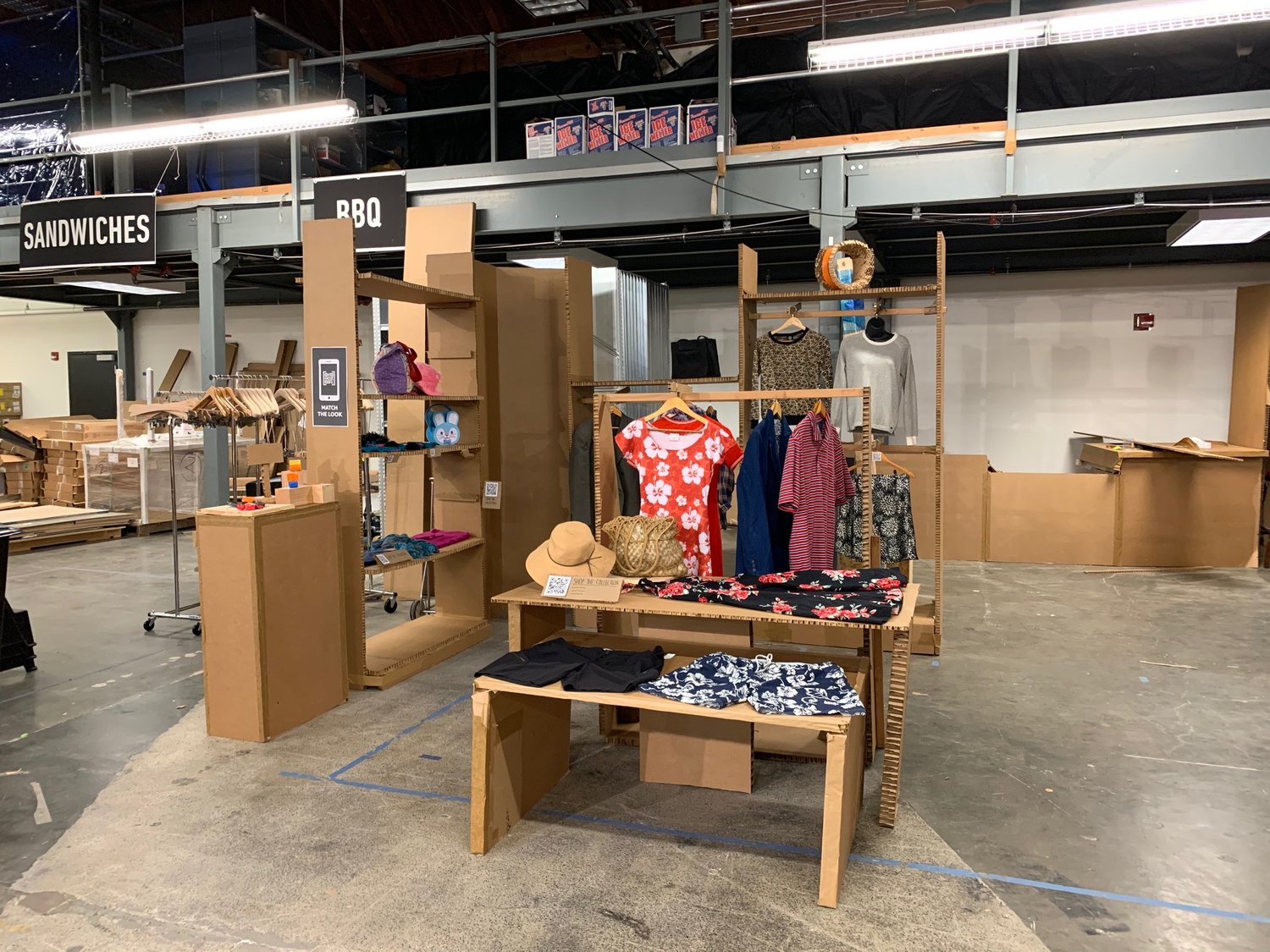
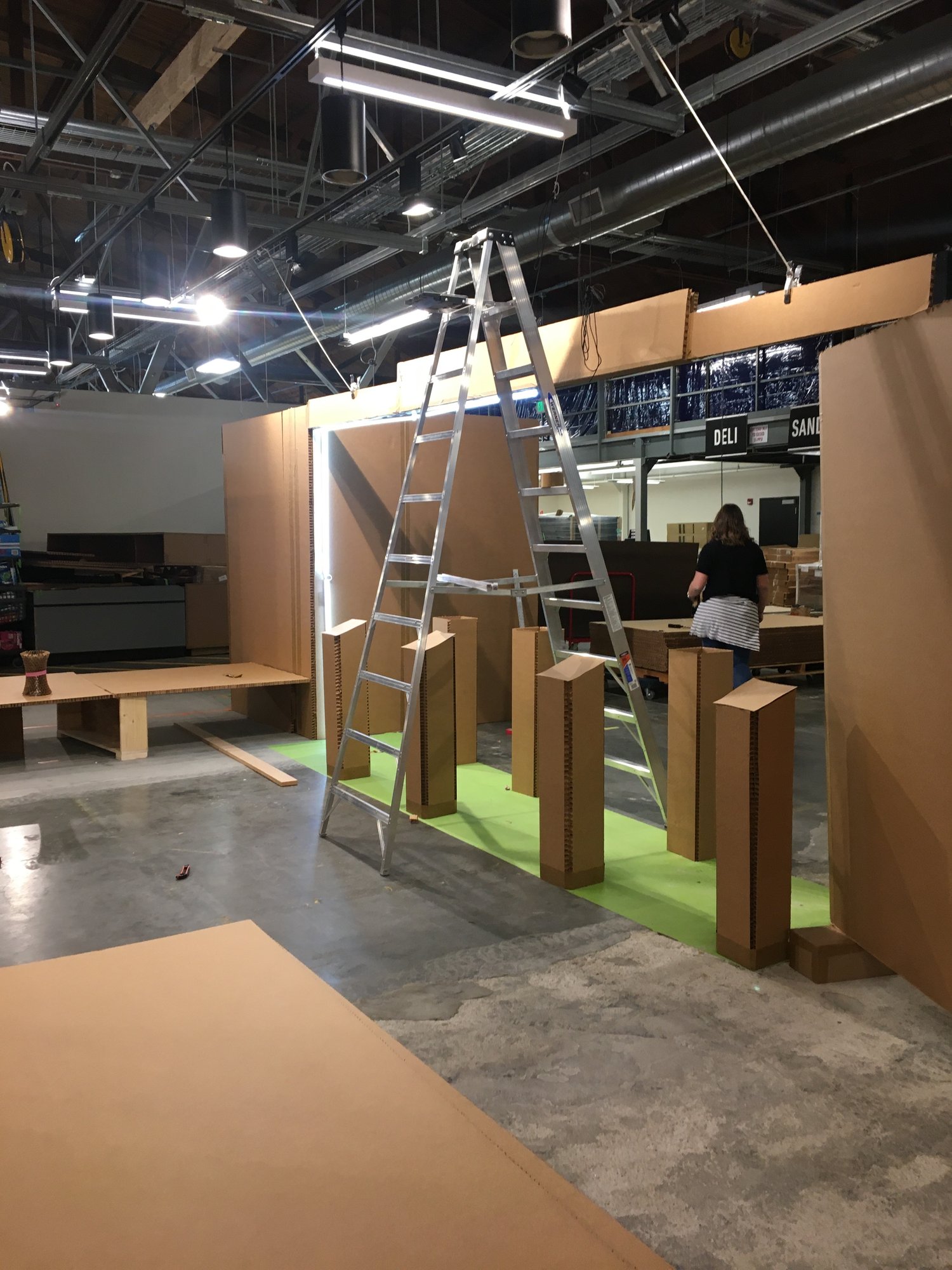
During this phase, I downloaded and studied every possible retail app I could and walked through their UX. Then, working with direction from the client to make as simple of a prototype app as possible, I created a simple mock-up for use in a series of physical tests.
My favorite aspect of this process learning about the various methods in which people are educated through app onboarding screens.

The initial starting place for this project was to visit every possible “store of the future”, “amazon go of ______”, and anything with omni-channel experience. A primary goal of this was to set a baseline of what’s successful in various environments and outline hypotheses for why. This process was aided, of course, by outspoken people on the internet as well as interviews through the occasional professional connection to various retailers.
From here, we outlined a matrix of recommended technologies, how they fit with the brand of our client, and a series of potential designs to prototype and iterate upon. Each portion of the store was divided into sections so teams could focus on their own set of considerations before switching and comparing notes.
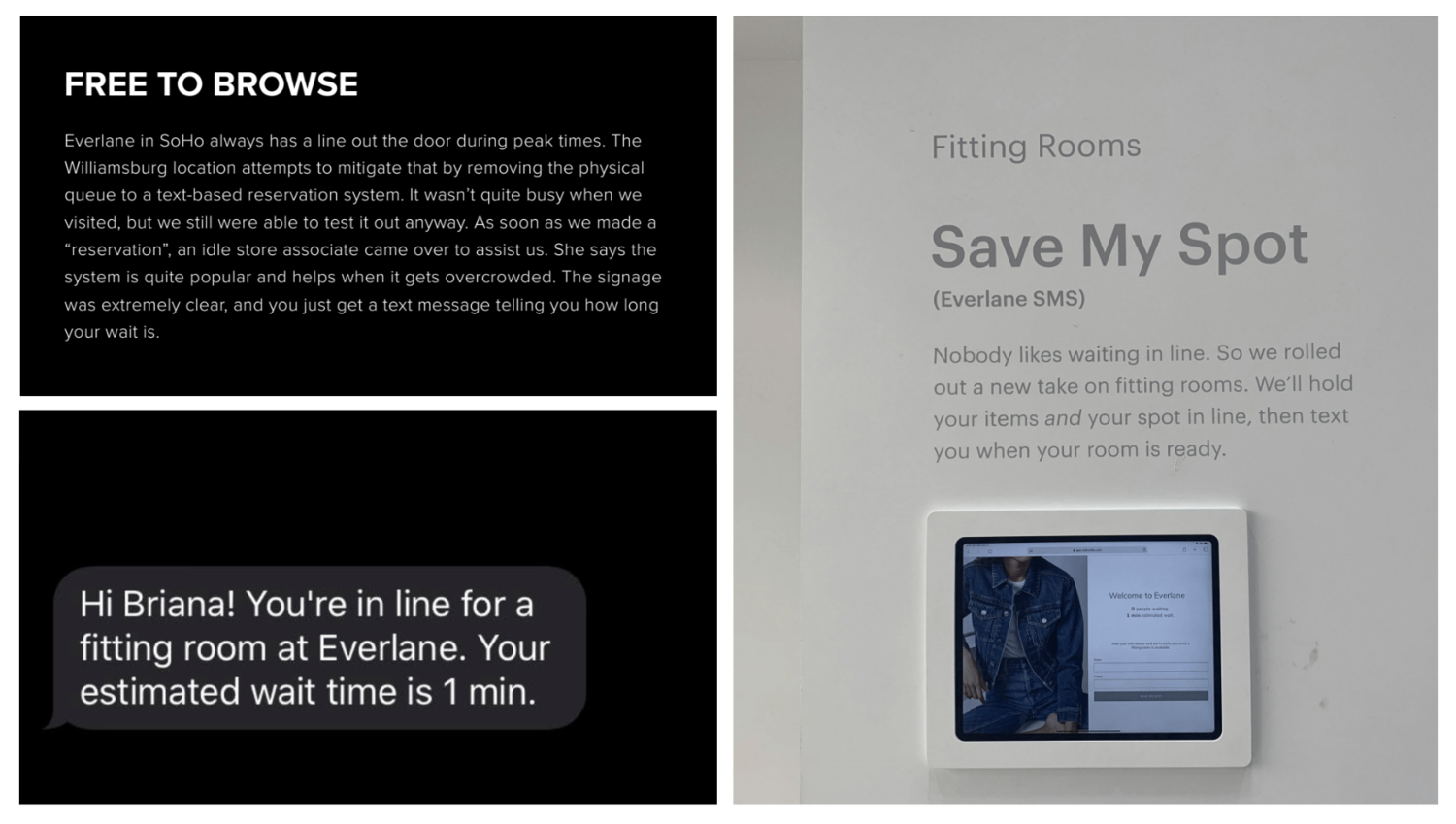


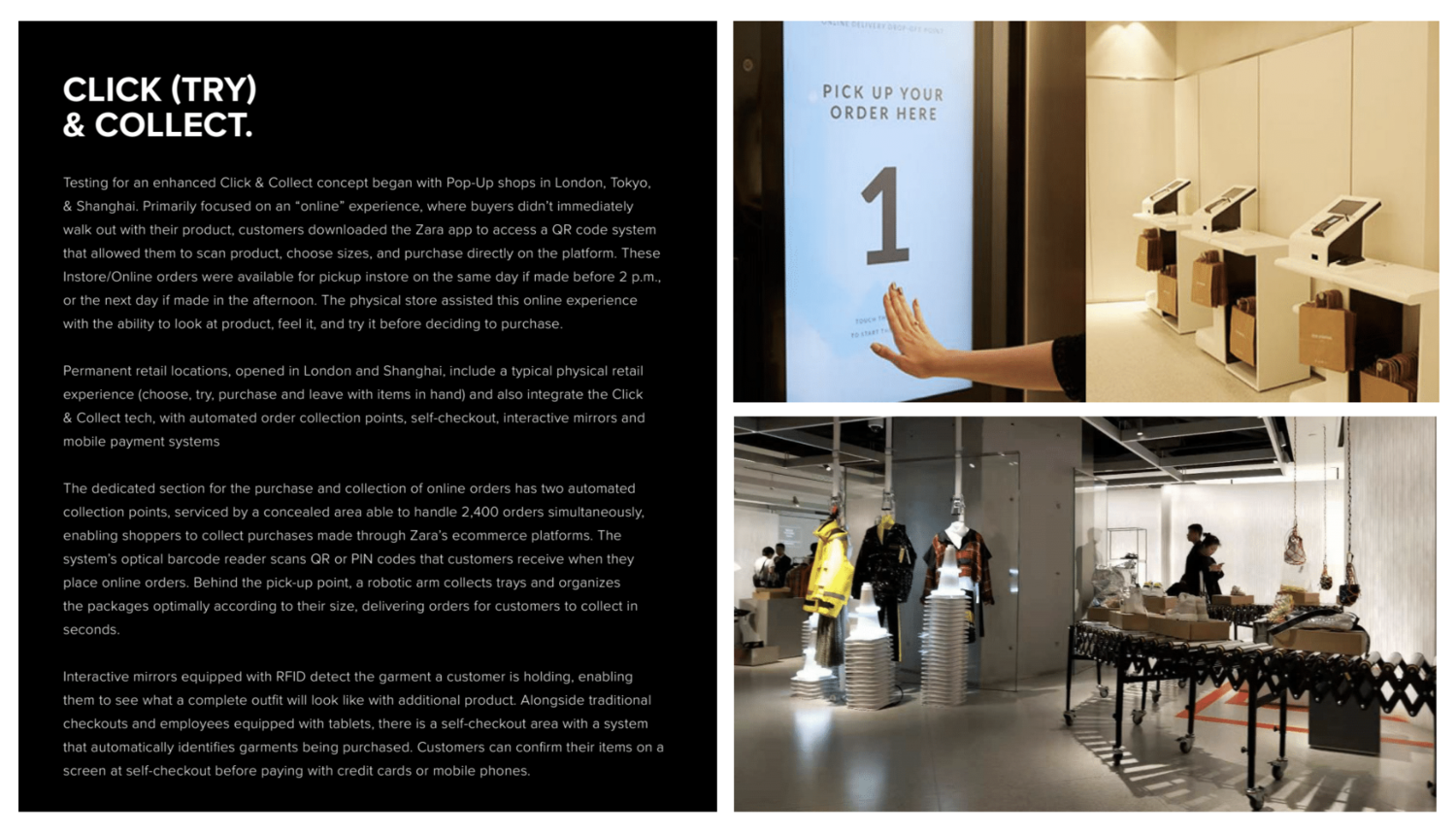
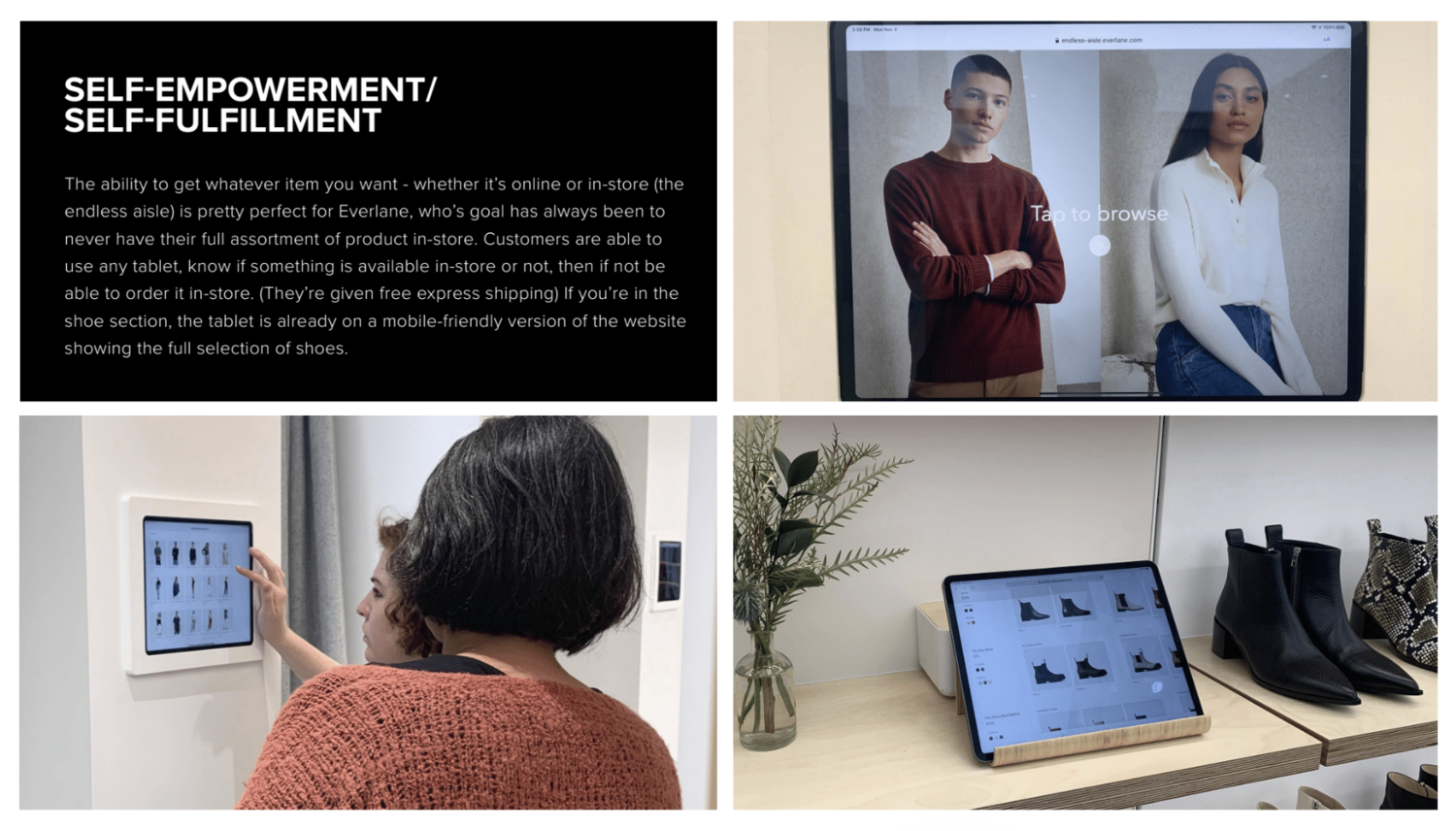
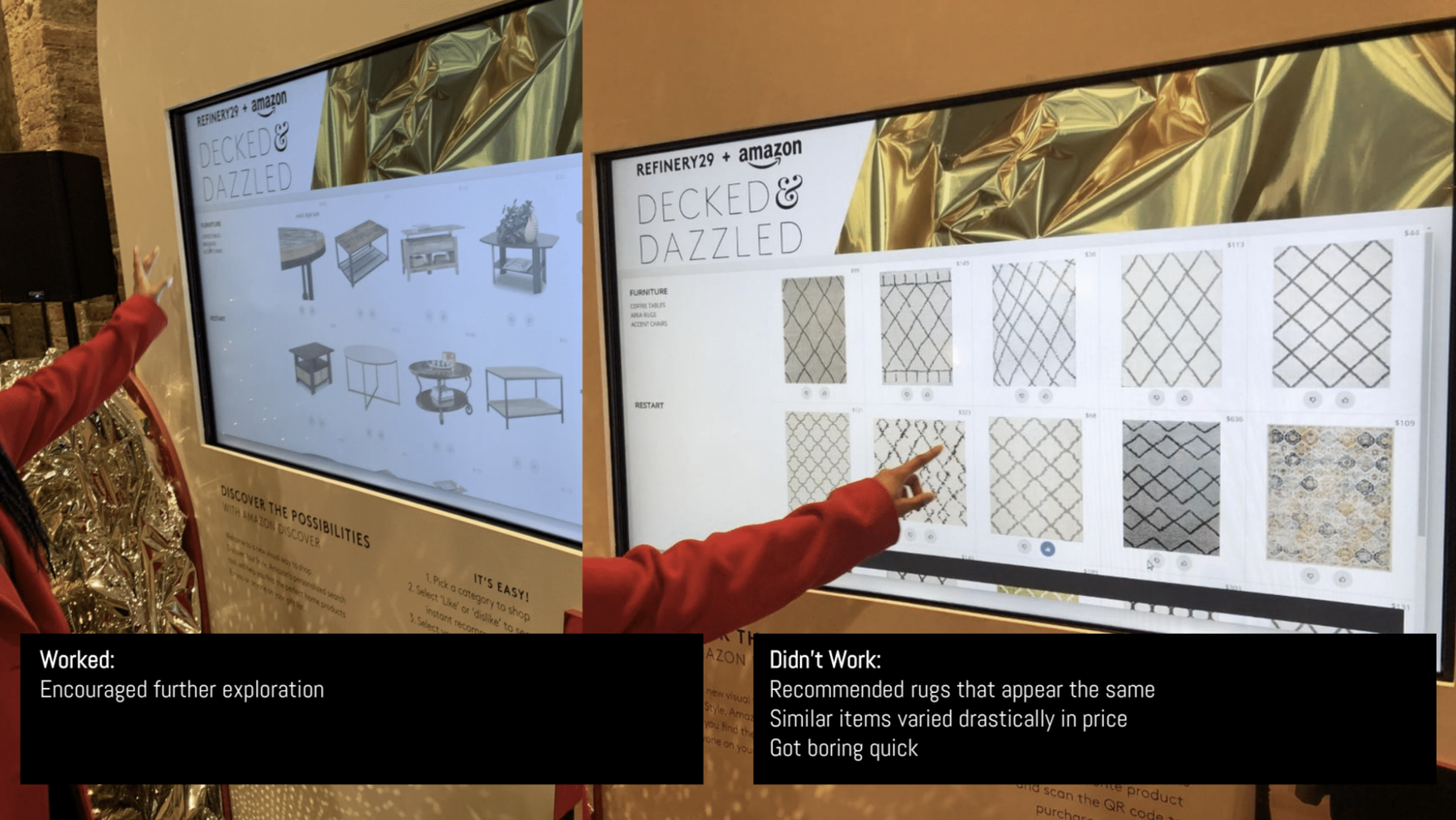
Finally, we were tasked with brainstorming 12 overarching narratives that could apply to the entire store. Our initial studies were based on technical and logistics restraints, and then direct feedback from users.
The findings are intended to be used in combination with a variety of narratives would be used for the next series of prototypes.



